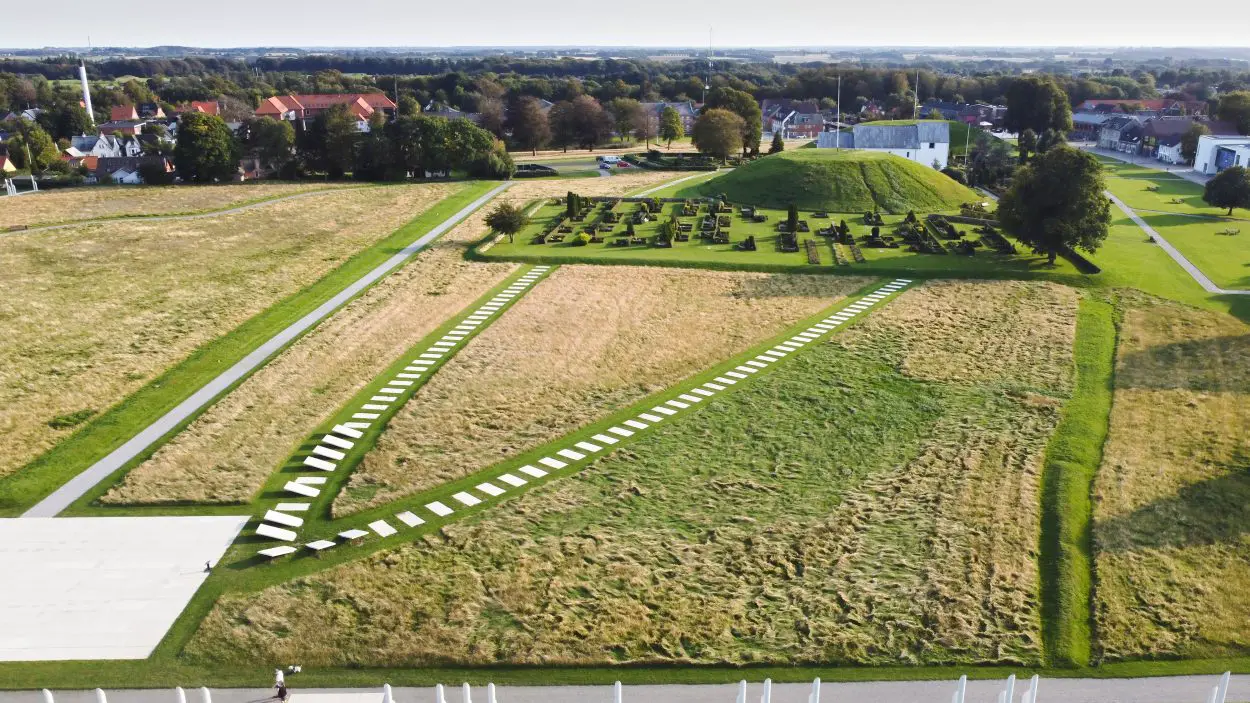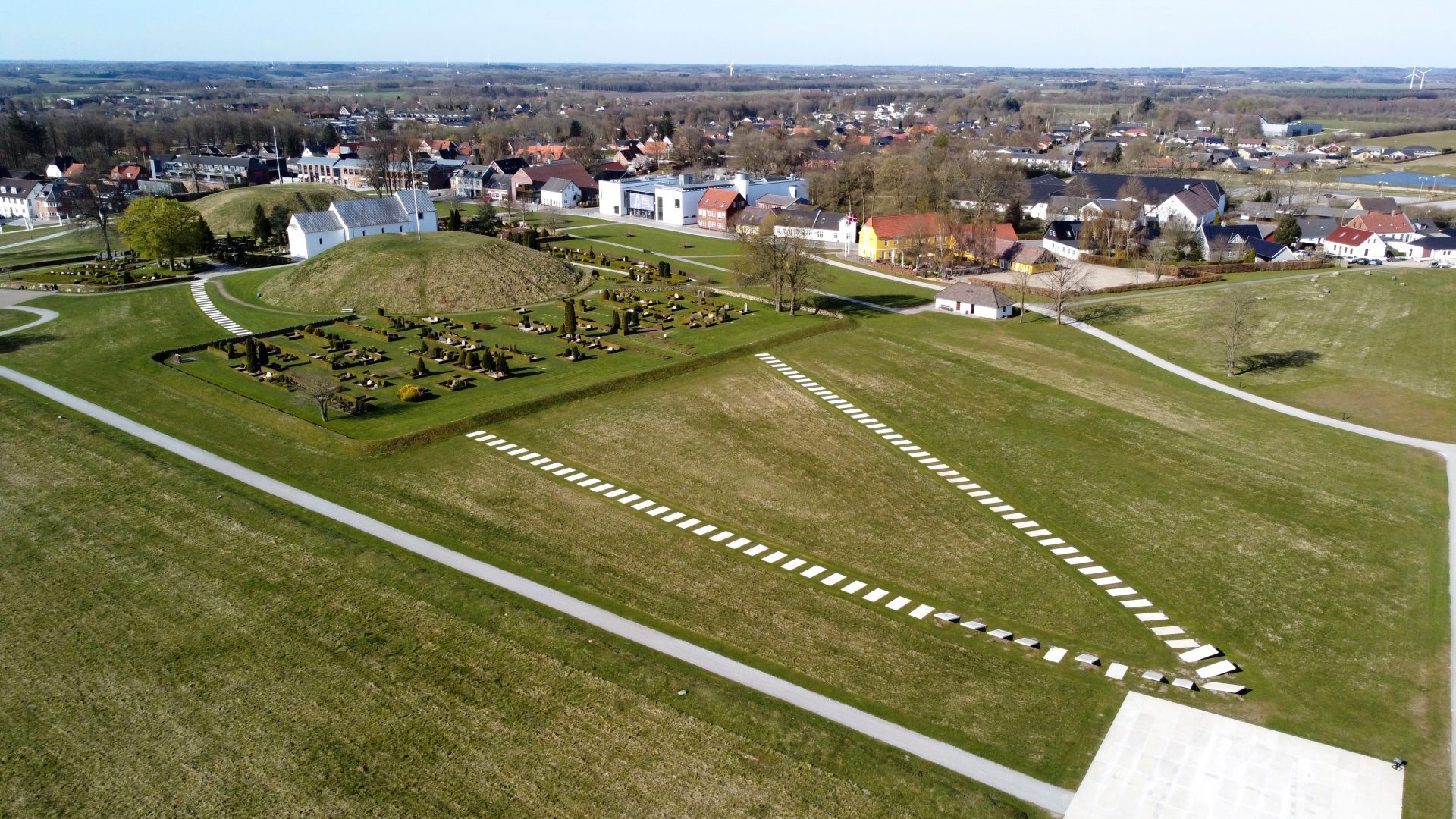The Jelling stone ship is situated in a Viking burial complex, which lies under two large burial mounds constructed by King Harald Bluetooth in Jelling, Denmark.
Stone ship burials was characteristically a Scandinavian burial custom, although similar examples have been found in Northern Germany and the Baltic states. Scholars have proposed that stone ship burials developed from the desire to equip the dead with everything they had in life, or to facilitate their journey to Hel (the afterlife) after their death.
During the mid-10th century AD, Harald constructed a large burial mound over an existing Bronze Age mound for his father, Gorm the Old (also called Gorm the Languid). Gorm was ruler of Denmark from AD 936 – 958/964 and was considered the traditional ancestral “head” of the Danish monarchy. The ship setting, which ran for 354 metres in length and contained around 370 monoliths, was likely built after the mounds construction (which dendrochronological evidence dates to around AD 958-59), in which the mound served as the ships centre.
A rune stone discovered at the site bears a runic inscription that reads: “King Harald had this monument made in memory of his father Gorm and his mother Thyra : this was the Harald who won for himself ll Denmark and Norway, and made the Danes Christians.”

To the south, an empty burial mound was erected around AD 970 over the southern end of the ship setting, in which a runestone describes as the grave of Harald’s mother, Queen Thyra, who is credited with the construction of the giant Danevirke defensive wall.
There is also a stone ship associated with a Bronze Age burial mound at Bække, where a runestone was raised by Tue, son of Ravn, to his trutnik Thyra, claiming that Tue raised Thyra’s mound.
A recent suggestion is that Thyra was married first to Gorm and then to Tue, and that the mounds and ships represent rival claims to her lands on the part of Tue and Harald. This would explain the raising of an empty mound and the prominent runestone between the two Jelling mounds, in which Harald refers to both his parents.
Header Image Credit : Peter Helge Petersen – Shutterstock





